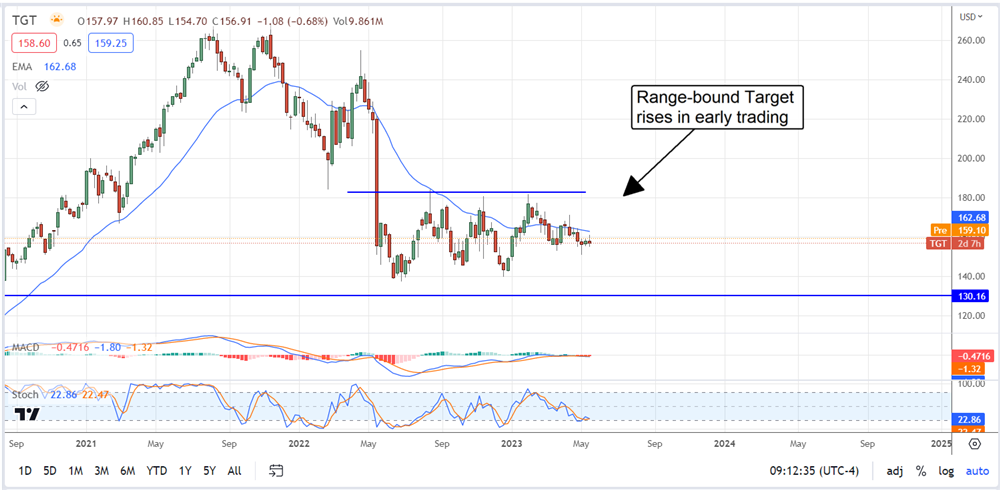
Target (NYSE: TGT) reported a better-than-expected quarter driven by the underlying momentum within the US economy. That’s the good news. The bad news is that outlook is weak, echoing home improvement retailer Home Depot (NYSE: HD), and gives further evidence of a looming recession in the US. While spending remains solid, consumer demand is weakening, and there is a shift as they cut out discretionary items in favor of food, shelter, and gasoline.
This means a reduction to Target’s Q2 outlook that may foreshadow additional guidance reductions for the business and investors later in the year. The company is not in danger of failure, it has the positioning and resources to make it through the dark time, but investors should not expect a rally in this stock to hold if it forms, and there is a chance the market will retest lows set in 2022.
Among the headwinds facing Target is shrinkage. Shrinkage is the polite form of shoplifting, cutting into margins. Shrinkage has been rising since late last year and is a sign of an increasingly pinched consumer. For Target, it means a weakening consumer and additional costs to prevent theft.
“As we look ahead, we now expect shrink will reduce this year's profitability by more than $500M compared with last year. While there are many potential sources of inventory shrink, theft and organized retail crime are increasingly important drivers of the issue,” CEO Brian Cornell said.
Target Has Better Than Expected Quarter But Guides Q2 Lower
Target’s Q1 results were better than expected, but the news cannot offset the guidance and potential for additional reductions. The company reported $25.32 billion in revenue for a gain of 0.6% compared to last year to beat the Marketbeat.com consensus by $0.040. That’s a slim margin even when compounded by a better-than-expected profit margin. Comp-store sales are up 0.7% versus the 1.1% expected and were offset by a 3.4% decline in digital sales.
Margin news is mixed, with gross margins improving by 70 basis points and SG&A offsetting that with an increase of 90 basis points. The takeaway is that operating income fell 1.4% compared to last year and the top-line growth, but the analysts were expecting worse results. The adjusted earnings came in at $2.05 compared to last year’s $2.19 but are $0.29 above consensus.
The bad news is that Q2 guidance was reduced due to slowing consumer demand, and the FY guidance, which was maintained, is optimistic. The company expects Q2 earnings in a range of $1.30 to $1.70 compared to the $1.93 consensus figure and for this weakness to be offset by the Q1 strengths. The 2nd half of the year is expected to be as previously guided, which the market should not expect given the deteriorating near-term outlook.
The Technical Outlook: Target Is Trapped In A Range
The Target price action is range bound and will likely remain so in 2023. The top is near $181, consistent with the analysts' consensus target. That target has held steady over the last 3 months and may edge lower now that the guidance has been updated. Regardless, the stock is unlikely to move above the $181 level in 2023 until there is a positive change in the outlook for revenue and earnings. Until then, the odds of retesting support at the bottom of the range near $140 remain very high. If the market can’t get above the 150-day moving average near $163, the action may test the bottom of the range before it retests the top.














